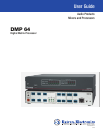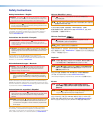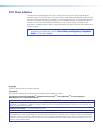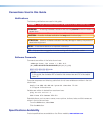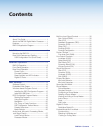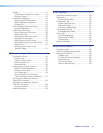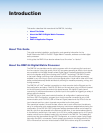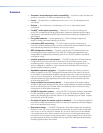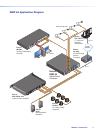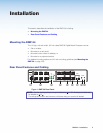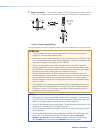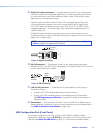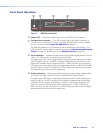
Features
• Consumer and professional audio compatibility — Input and output line level can
be set to consumer (–10dBV) or professional (+4dBu).
• Inputs — Six balanced or unbalanced mic/line on 3.5 mm, 3-pole captive screw
connectors.
• Outputs — Four balanced or unbalanced on 3.5 mm, 3-pole captive screw
connectors.
• ProDSP
™
audio signal processing — Features 32- and 64-bit floating point
audio DSP processing providing wide dynamic range and maintaining audio signal
transparency while preventing DSP signal clipping and simplifying management of
gain staging.
• Pro-grade hardware — Studio grade 24-bit, 192 kHz analog-to-digital and
digital-to-analog converters sampling at 48 kHz.
• Low latency DSP processing — The DSP engine supports a large array of
concurrent audio processing within an audio channel and across multiple channels,
while maintaining extremely low latency from input to output.
• DSP Configurator software — Powerful, user-friendly PC-based software tool
for managing all audio operations of the DMP64. Enables complete setup and
configuration of digital audio processing tools on the ProDSP platform, as well as
routing and mixing.
• Intuitive graphical user environment — The DSP Configurator Software features
a Graphical User Environment with a clear view of all input and outputs, audio
processing blocks, routing, mix points, and virtual routing in a single window. This
allows a designer or installer to quickly view all audio activities without having to
access multiple windows or menus.
• SpeedNav keyboard navigation — SpeedNav enables user-friendly, keyboard-
based navigation of the DSP Configurator Software without the need for a mouse
or touchpad. Using keyboard navigation keys and shortcuts, a user can access any
input or output, mixing points, and all audio DSP tools. Using only the keyboard for
software access can help expedite audio system setup and commissioning while
on-site using laptop PCs.
• Copy and paste for processing blocks — To help speed audio system design
and setup, parameter settings can be quickly copied between individual processing
blocks or identical groups of blocks within the Graphical User Environment, using
conventional cut-and-paste commands.
• 32 DSP Configurator presets — Using the DSP Configurator software, parameters
for DSP processing, signal levels, or audio routing can be saved as presets. These
settings can be saved for the entire system, or any selected group of inputs, outputs,
mixing points, and DSP blocks.
• Six digital I/O ports for remote control or feedback — Six configurable digital I/O
ports are provided that enable the DMP64 to sense and respond to external triggers
such as mic activation and muting.
• Dual matrix design — The DMP64 employs a dual matrix design with substantial
flexibility to rout, mix, and process audio input sources. A primary matrix routes each
input to any or all four outputs. If desired, any of the six inputs can first be directed
into a secondary matrix, which routes the inputs to four virtual buses before being
mixed back to the outputs via the primary matrix. Virtual buses allow for inputs to be
grouped together and then processed with the same DSP settings and parameters,
simplifying system setup and control.
DMP64 • Introduction 2



